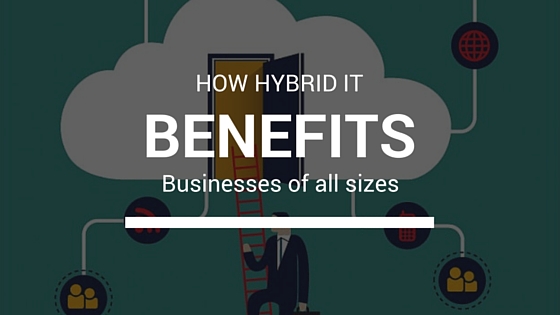How Hybrid IT Provides Compelling and Unique Benefits for Businesses of All Sizes
The infrastructure of IT has changed a lot in the previous two decades. Gone are the days when everything needed to be done in-house; more companies are now finding success with outsourcing and cloud solutions, primarily because it allows them to do more while paying less. While outsourcing and cloud solutions are great at increasing efficiency, IT heads need to take a serious look at how their organizations operate. There is no reason to throw the baby out with the bathwater; sure, outsourcing IT services can lead to lowered costs but there are some things which need to be kept in-house. This is why we are seeing the rise of Hybrid IT. Smart executives are making decisions that factor in not just the cost but productivity and work culture as well and this smart decision is proving to be very beneficial for organizations.
Why Service Providers and Cloud are winning
There are a lot of reasons that companies are choosing to use cloud services and service providers instead of building their own infrastructure. While cost is an obvious reason, it is not the only reason. The truth of the matter is that a lot more becomes possible when you use cloud solutions and external service providers. When it comes to storage, for example, the cloud storage services provide storage types and capacities which would be almost impossible for a small to medium sized enterprise to have in-house. A huge advantage in services and cloud solutions is the flexibility; organizations can quickly grow their capacity of work due to new projects without worrying about investments and creating new infrastructure.
Another huge reason companies choose external solutions is management. When you create an in-house solution, you have to manage each and every part of the solution. When you outsource it, you just have to worry about the results while all the problems are the responsibility of the service providers. This makes things easier for managers because it basically becomes an area they don’t have to worry about anymore. This isn’t management shirking on their responsibility; it is them being smart. A service provider is much better equipped to solve any issues quickly when compared to an IT department in a company.
Things only in-house solutions can deliver
While cloud and external service providers are great, they cannot truly replace in-house solutions completely. The reality is that in-house solutions are often better equipped to solve the issues in an organization. Management has complete control over in-house solutions and if you have a proper on-site IT department you can customize it much more than any external solution. You can come up with bespoke solutions which address any specialized requirements your organizations might have.
Secondly, there is a huge human factor involved in these things. When you’re working with people within your organization you can sit down with them and brainstorm new solutions. You can come up with creative solutions other people might not have thought of. The responsiveness is also instant, even if the solution isn’t. When a problem becomes apparent you don’t have to wait for someone else to fix it, it can be fixed by your employees.
Hybrid IT – The Best of Both Worlds
Having hybrid IT means having the best of both worlds. It means creating a solution in which there is an internal IT department but outsourcing and cloud solutions have been employed wherever feasible. This is a winning combination if applied right. The key to a hybrid IT solution is good management. The first step is to do a deep analysis of the functions of the IT department in your organization. Once the functions are clear they need to be analyzed with outsourcing or cloud solutions in mind. You have to decide what functions would be better done by your own people and what functions can be outsourced.
An important factor is control. You need to set controls about the services that are delivered to you. A good CIO or IT manager needs to keep a close eye on how well the services are being performed by external sources. The first step is to set a benchmark which the vendor must meet. Once a benchmark is set a close relationship needs to be created with the vendor which allows two way communications. Once you have properly integrated your on-site department with cloud solutions and service providers the department will perform more efficiently than ever before.



